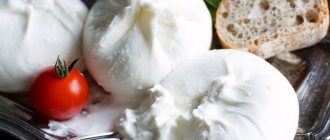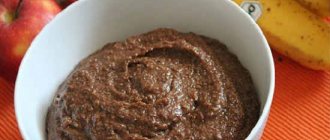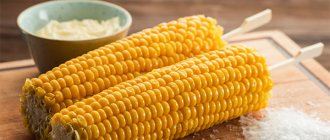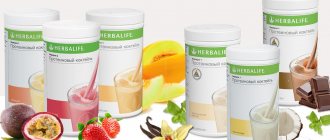Have a nice day, friends! The desire to have fun is inherent in us by nature itself. This is why we tend to choose foods with a sweet taste, but sometimes we have to limit ourselves. Sweeteners or sugar substitutes can help us with this, we just need to choose ones that are safe, natural, without calories, carbohydrates and flavor. And today I will teach you to understand more about this variety that promises a sweet life.
My grandmother has been suffering from diabetes for a long time, and then one day she asked me what would be the best substitute for sugar? She used to use sorbitol or cyclamate, but then she read somewhere that these are not safe products. Then I asked myself this question and started looking for information about sugar substitutes that are available in our country. And this is what I found...
Types of sweeteners or which one is better to choose
The sweetener is used by people not only with symptoms of diabetes, but also with forms of prediabetes, as well as people who want to lose weight. But which sugar substitutes are best? In this article I will start talking about these food products, you will learn about the classification, properties and application, in the next ones I will continue and look at real products sold in stores and pharmacies, so I advise you to subscribe to blog updates so as not to miss this.
It's no secret that patients with diabetes are recommended to consume less easily digestible carbohydrates, which include granulated sugar, honey, jam and other sweets. These products are based on carbohydrates such as glucose and fructose.
But how can you live without sweets? For some, sweets are almost the only source of pleasure that they have to avoid. However, scientists and food workers found a way out and created sweet substitutes that lack the properties of regular glucose.
Their name is sugar substitutes or sweeteners. New acceptable sweet pleasures are constantly emerging. But how to choose a sugar substitute and not make a mistake?
Basic requirements for glucose substitutes
Before a sweetener hits the market, it goes through many tests. Ultimately, it must meet certain requirements. Here are the main ones:
- the presence of a pleasant sweet taste (for this reason it is created)
- harmlessness and safety
- no effect on blood glucose levels, insulin and lipid spectrum
- caries prevention
- good solubility in water
- preservation of its properties when cooking
What are sweeteners made from?
Each person tries to choose only the best for himself, of course, as much as his knowledge allows him. Also in the choice of these food products. And to do this, you need to know what they are made of and try to buy only natural options. The production technology uses different raw materials and the sweetener can be:
- natural (natural or plant-based)
- synthetic (artificial)
Let's take a closer look at each group and start with the first.
Types of natural sweeteners
Sweeteners of natural origin include:
- Thaumatin (2000.0-3000.0)
- neohesperidin (1500.0)
- stevioside (200.0-300.0) (stevia is a natural sugar substitute)
- erythritol
- maltitol or maltitol (0.9)
- xylitol (1,2)
- sorbitol (0.6)
- mannitol (0.4)
- isomalt
In my new articles I will talk about each product in more detail. Here I will only say from what natural components they are made.
Thaumatin is extracted from the African fruit - catemphe, neohesperidin - from bitter orange, stevioside - from a plant, or rather an herb, called stevia, erythritol is obtained by an enzymatic reaction using yeast from corn. Maltitol is obtained from malt sugar, sorbitol is obtained from corn starch, xylitol is obtained from agricultural waste and wood, and mannitol is obtained by hydrogenation (saturation with hydrogen) of fructose. Isomalt is a sugar isomer that is then hydrogenated. But I must warn you that not all organic sugar substitutes meet the requirements that I mentioned above. The last five types are completely unsuitable, since they contain calories and still slightly increase blood sugar. To assess the sweetness of a particular sweetener, a comparison with sucrose, that is, with simple sugar, is used, with sucrose taken as one. Note! The value in parentheses above indicates how many times sweeter a particular product is than sugar. Our Sugar online store normally sells only healthy sugar substitutes and sweeteners. You won't have any difficulty in choosing as they are all good. To buy a sugar substitute, follow the link .
Types of artificial sugar substitutes
Synthetic sweeteners include:
- sucralose (600.0)
- saccharin (500.0)
- aspartame (200.0)
- cyclamate (30.0)
- Acesulfame K (200.0)
Let's see what unnatural sweeteners are made of. Sucralose is made from regular sugar, but by chlorination. The result is chlorocarbon, a compound that does not occur naturally. Chlorocarbons are essentially pesticides.
The sweetener saccharin is extracted from toluene, which is used to make explosives. The sweetener aspartame is an extremely harmful substance, which is obtained by artificially combining two amino acids.
Cyclamate is made from cyclohexylamine and trisulfur phosphate and is banned in most developed countries. Acesulfame is produced by a chemical reaction between derivatives of acetoacetic acid and aminosulfonic acid.
Now think about whether such compounds can be harmless? Is it worth spending money and health on obviously harmful products if there are safer ones?
Sugar substitutes for drying
Sweeteners do not cause insulin secretion by stimulating taste buds; they can be used during drying and weight loss.
The effectiveness of sweeteners is associated with low calorie content and the absence of fat synthesis when consumed.
Sports nutrition is associated with reducing sugar in the diet. Artificial sweeteners are very popular among bodybuilders.
Athletes add them to food and cocktails to reduce calories. The most common substitute is aspartame. The energy value is almost zero.
But its constant use can cause nausea, dizziness, and blurred vision. Saccharin and sucralose are no less popular among athletes.
Forms of release of sweet substitutes
As you can see, there are so many sweeteners that it can make your eyes wide open. And it’s not surprising, because this is a whole industry that wants to meet the needs of people who monitor their sugar levels, insulin and their health. True, this service from manufacturers often backfires on buyers, so our task as consumers is not to fall for the bait and not succumb to sometimes intrusive advertising.
So, in what form do manufacturers present us with products that replace regular sugar? There are currently three forms of release:
- in tablets
- in powders
- in liquid form
You can choose which one you like best. I will say this, the tablets are easy and convenient to use in drinks and always carry with you. This form has convenient packaging and dispenser. Powdered sweetener is convenient to use in preparing homemade food, such as baking. There is no need to dissolve the tablets. But there are also powdered sugar substitutes in the form of single-use sachets, like those handed out on trains or planes. It’s also convenient, I note. The liquid form also has a right to exist. It is also convenient to use in cooking, but unfortunately it is not convenient to carry with you. Just look, it will open and spill along the road.
Sugar substitutes for drying
Important to know! Problems with sugar levels over time can lead to a whole bunch of diseases, such as problems with vision, skin and hair, the appearance of ulcers, gangrene and even cancer! People, taught by bitter experience, use... Read more... “Sweet substitutes do not cause insulin secretion by stimulating taste buds, and can be used for cutting and losing weight.
The effectiveness of sweeteners is associated with low calorie content and the absence of fat synthesis when consumed.
Sports nutrition is associated with reducing sugar in the diet. Artificial sweeteners are very popular among bodybuilders.
Athletes add them to food and cocktails to reduce calories. The most common substitute is aspartame. The energy value is almost zero.
But its constant use can cause nausea, dizziness, and blurred vision. Saccharin and sucralose are no less popular among athletes.
Calorie content of sweeteners
I am sure that you still prefer natural and plant-based products that replace table sugar. However, as I said above, not everything natural can be useful. How many calories are in sugar substitutes and are there the same ones, but without the calories? Typically, a person does not think about sweeteners until they have problems such as diabetes, impaired glucose tolerance, or excess weight. A rare individual will choose sweeteners to prevent these diseases, such as the author of this article, i.e. me. Therefore, when choosing, it is very important that the product does not increase glucose and insulin levels, and does not contain extra calories.
I hope you understand why these properties are needed. For those who haven’t guessed, I’ll answer. Patients with diabetes have a problem with high sugar levels and it would be great not to provoke its increase again. Also, type 2 diabetics and people with impaired glucose tolerance, as well as obese people, have elevated insulin levels, which is also very, very bad. And since an increase in insulin is directly related to an increase in blood glucose, by reducing the latter, we will also reduce the insulin level. Well, and finally, some permitted sweets have a calorie content indistinguishable from regular sugar, and therefore, when they are consumed, excess calories enter the body, which leads to even more excess weight. It is for these reasons that you need to choose not low-calorie ones, as some write, but sugar substitutes with absolutely no calories and no carbohydrates. Maltitol, sorbitol, xylitol, isomalt and mannitol cannot be called safe sugar substitutes, because some of them contain carbohydrates, others contain calories, and others contain both.
What then is the best sweetener? The rating looks something like this:
- stevioside
- erythritol
- neohesperidin
- thaumatin
The most common are stevioside and erythritol. You can buy either individually or a combination of them. They do not cause negative effects, unless, of course, you exceed the recommended dose. Agree that everything has its limits, even regular sugar causes side effects, ranging from acne to obesity and diabetes.
Calorie sweeteners
Nutrient sweeteners and sweeteners include sorbitol, fructose and xylitol. All of them, as well as the products consumed or prepared with them, have a high calorie content. For example, the high energy value of confectionery products is due precisely to the use of sugar or its substitutes. If you are looking for a non-calorie sugar substitute, fructose is definitely not for you. Its energy value is 375 kcal per 100 grams.
Sorbitol and xylitol have little effect on blood sugar levels, so they are often recommended for diabetics. Despite this, these sweeteners should not be used in large quantities either due to their huge calorie content:
| Sweetener | Calorie content per 100 g |
| xylitol | 367 kcal |
| sorbitol | 354 kcal |
| stevia | 272 kcal |
| sucralose | 268 kcal |
Overdose and side effects
As I mentioned above, each such product has its own safe dose, if exceeded, symptoms of overdose may appear. As a rule, the symptoms of an overdose are identical for all sweeteners - loose stools, abdominal pain, bloating, symptoms of intoxication. You just need to stop taking these substances and everything will get better in a couple of days. I was recently asked the question: “What happens if you eat a packet of sweetener?” My answer is shown in the picture below)
Side effects are a little more complicated. It is natural that synthetic sweeteners have much more of them than natural ones. Many of them have a toxic effect, such as aspartame, some cause the growth of cancerous tumors, and some have such an unclear effect on the body that scientists are still arguing whether it is harmful or not. I was talking about synthetics just now. Natural options can generally cause allergic reactions and individual intolerance, and sorbitol has been found to cause and intensify neuropathy. But if you are not allergic to stevia or erythritol, then you can safely use them, because they have no other side effects.
Contraindications to the use of sweeteners
This question concerns most of all artificial substitutes, since some of them cause teratogenic effects, i.e. cause fetal deformities, and therefore are prohibited for pregnant and nursing mothers, and I also do not recommend giving them to children and adolescents. Aspartame is contraindicated in people with the hereditary disease felineketonuria. For such people it is simply a deadly poison. The only contraindications to the use of herbal substitutes are allergies and intolerance.
What sweeteners are used in dietary products?
If you thought that you would find diet foods with safe sugar substitutes on the mass market, then I will disappoint you. In the diabetic and dietary products section of a regular supermarket you will find some very unhealthy products. Most of these products are made with fructose, as well as sorbitol or sucralose.
Finding chocolate with stevia is almost impossible, and if you find it, then look at the composition, there will probably be some other sucralose, if not fructose with isomalt. In this case, you fell for a successful marketing ploy - positioning the product as healthy by including a little stevia in the recipe. Remember that the main ingredients in confectionery products for diabetics are fructose, sorbitol, xylitol, isomalt, as well as any of the synthetic ones under the code “E”. Read the packaging carefully! Want to know more about chocolate for diabetes? Read the interesting article “Can you eat chocolate if you have diabetes and in what quantity?” .
About calories in a spoon of sugar
To accurately determine the number of calories in a cooked dish, you must provide the following data and values:
- a tablespoon holds 20 g of product,
- provided that there is a heaping tablespoon of product, there will be 25 g,
- 1 g of granulated sugar contains 3.99 kcal, so one level tablespoon contains 80 kcal,
- if the spoon of the product is topped, then the calories increase to 100 kcal.
When preparing dishes with the addition of granulated sugar, if you want to lose weight, the energy value of the product should be taken into account.











